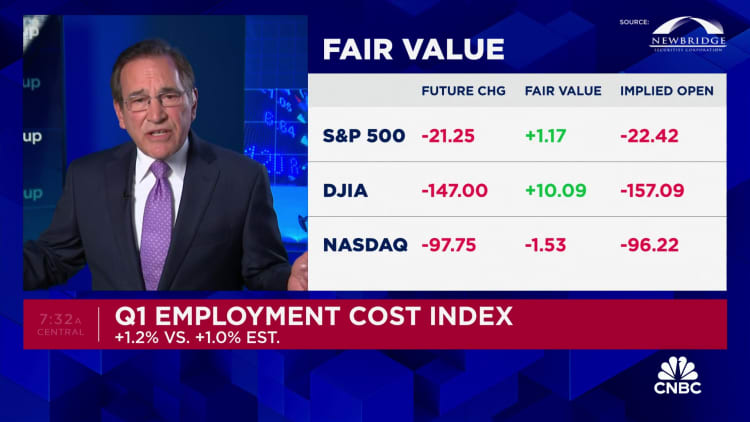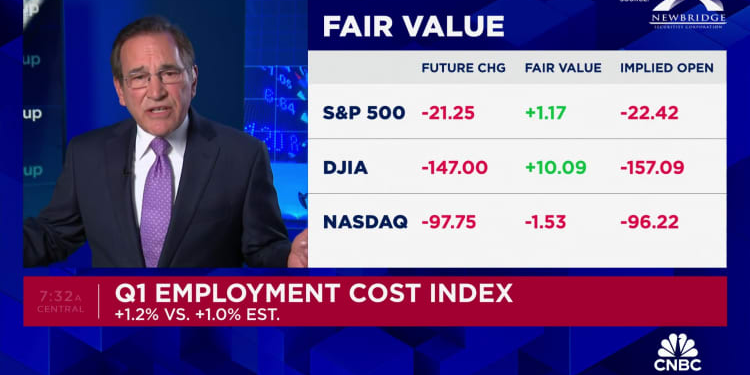Amidst growing concerns about inflationary pressures, the latest report from the Labor Department has revealed a significant surge in employee compensation costs. The employment cost index (ECI), which tracks worker salaries and benefits, rose by 1.2% in the first quarter of the year. This increase surpassed both the previous quarter’s reading of 0.9% and the consensus estimate of a 1% rise. The sharp uptick in compensation costs has raised worries among economists and policymakers, suggesting that inflationary pressures may persist despite recent efforts by the Federal Reserve to curb them through interest rate hikes.
Implications for Federal Reserve Policy
The Federal Open Market Committee (FOMC), which begins its two-day meeting, faces increasing pressure as traders adjust their outlook on potential rate cuts. Following the release of the ECI data, market expectations for the timing of the first rate cut have shifted to September, with roughly equal probabilities, according to the CME Group’s FedWatch measure. Additionally, the implied probability of no rate cuts this year has risen to around 23%, up from nearly zero just a month ago. These developments underscore the challenges faced by policymakers in balancing inflation concerns with the need to sustain economic growth.
Analysis of Compensation Trends
On a year-over-year basis, compensation costs for civilian workers rose by 4.2%, exceeding the level deemed consistent with the Fed’s 2% inflation target. Wages and salaries saw a robust increase of 4.4%, while benefits costs experienced a slightly lower uptick of 3.7%. Notably, state and local government workers saw a significant rise in compensation costs, with unionized workers witnessing a steeper increase compared to non-union workers.

Consumer Confidence Wanes
In conjunction with worries about inflation, the Conference Board’s Consumer Confidence Index declined to 97, falling short of Wall Street estimates. Concerns over elevated price levels, particularly for essentials like food and gas, dominated consumer sentiment, overshadowing concerns about political and global conflicts. The decline in consumer confidence highlights the challenges faced by households as they grapple with rising costs and economic uncertainty.
Final Thoughts
The surge in employee compensation costs, coupled with declining consumer confidence, underscores the persistent challenges posed by inflationary pressures in the current economic environment. Policymakers will need to carefully navigate these challenges to ensure a balance between controlling inflation and sustaining economic growth. Vigilant monitoring and proactive measures will be essential to address these issues and foster stability in the markets.
For more exclusive insights and analyses, don’t miss these CNBC PRO exclusives.





















![A Conversation with Dave Heller About TCA’s Call on Washington [Video] A Conversation with Dave Heller About TCA’s Call on Washington [Video]](https://smartnewshub.com/wp-content/uploads/2024/11/11909-a-conversation-with-dave-heller-about-tcas-call-on-washington-video-360x180.jpg)
![New Company Uses AI to Train Autonomous Trucks [Video] New Company Uses AI to Train Autonomous Trucks [Video]](https://smartnewshub.com/wp-content/uploads/2024/10/11886-new-company-uses-ai-to-train-autonomous-trucks-video-360x180.jpg)

















